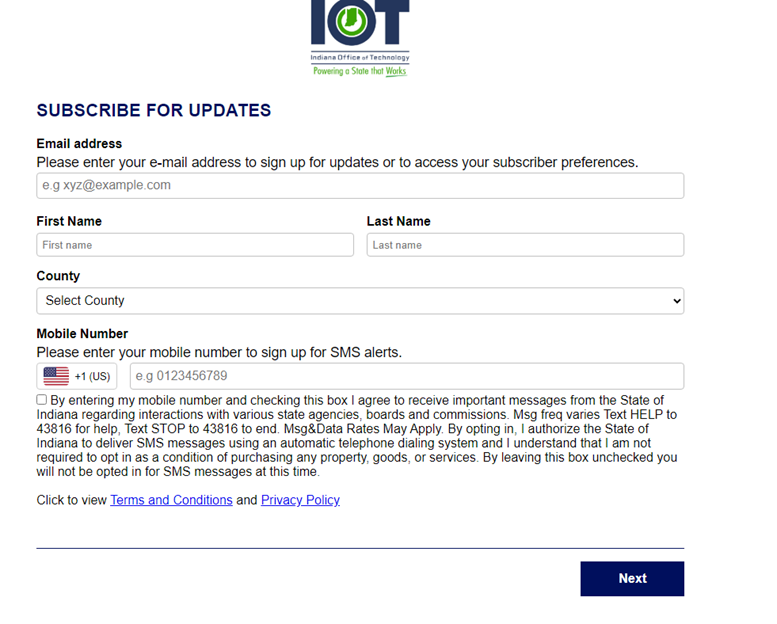 PERSPECTIVES FROM THE CAMPUS
PERSPECTIVES FROM THE CAMPUS
One of the strengths of Indiana is that we bring together a variety of perspectives from the plethora of areas that touch the field of cyber, especially through the colleges, universities, and other institutions of higher education throughout our state. Hence the name, “Perspectives from the Campus”, we invite experts – immersed in the pursuit of educating their students – to offer their knowledge for finding solutions in cybersecurity that benefit all Hoosiers.
In today’s fourth and final part of our “cyber impact” blog series, David Dungan, who serves as the executive director at the Center for Security Services and Cyber Defense at Anderson University, explores one of the most sensitive aspects of our life – our health care.
He examines the challenges that hospitals and health care providers and practitioners – of every size – are dealing with as a way to deliver all of us a compassionate level of care while, at the same time, safeguarding not only our personal information and medical records, but also the instruments and systems they rely on to keep us healthy.
By David Dungan
In today’s high-tech healthcare environment, connected medical devices have transformed patient care, but they’ve also introduced a new and dangerous threat - cyberattacks.
As hospitals, as well as healthcare providers and practitioners, increasingly rely on networked devices, understanding the risks of hackable medical equipment is more critical than ever.
A prime example of this is the integration between medical devices and clinical systems. However, this connectivity also exposes medical devices to greater cybersecurity risks. As medical devices, software, and operating systems become more interconnected within healthcare environments, managing and securing these complex systems becomes an increasingly difficult and complex challenge.
Given this, it is essential to understand that medical devices are vulnerable to a range of cyberattacks such as ransomware, man-in-the-middle (MitM) attacks, denial-of-service (DoS) attacks, and unauthorized access, which could lead to disrupted care, data breaches, or even the loss of life, if their security is compromised. Fortunately, there are several steps that can be taken by the hospitals and healthcare providers to help reduce these risks, such as regularly updating device software, conducting security audits, and choosing vendors that prioritize cybersecurity.
Just as we’ve seen a rapid increase in the interconnectivity of medical devices, so, too, have we seen the emergence of several critical vulnerabilities that can directly impact patient safety.
Some of the more vulnerable devices include:
- Hospital networking equipment (such as routers, switches, and wireless access points)
- Surgical robots
- Insulin pumps
- Patient monitors
- MRI machines
Many hospital networks often run legacy or end-of-life systems, leaving them vulnerable to a variety of potential attacks. Threat actors can remotely gain control of the movements of surgical robots, which could have significant consequences. Fortunately, cyberattacks on pacemakers are extremely rare, and usually require physical access; however, they have been vulnerable to wireless signal interception.
Insulin pumps can be safely controlled remotely, and dose information or instructions are transferred in plain text. However, any changes in the insulin dosage could result in hypo- or hyperglycemia. MRI results can also be intercepted and altered. Medical machines may fall victim to wider-scale attacks on hospital networks. Many times, once one device is infected with malware or ransomware, the attack can be replicated through other similar devices throughout the network. Different devices and functions of the hospital may be impacted by downtime from a chain of devices or even a single device.
In conclusion, the growing reliance on connected medical technologies demands a proactive approach to cybersecurity. Without strong safeguards, the very systems designed to save lives may become tools that could compromise our, otherwise, good health.
For example, should an MRI image be compromised and modified by an attacker, the entire treatment plan for that patient could be drastically different than what is needed in reality. Situations, such as this, underscores the urgency for more robust security measures to protect their patient’s data and their quality of life.
To proactively defend against cyberattacks and cyber incidents, hospitals, providers, and practitioners are advised to adhere to cybersecurity standards and best practices, particularly as it involves a patient’s privacy with HIPAA, and the requirements involved with HITRUST certification. It’s also a good idea to be sure to develop and maintain a System Security Plan (SSP) and consider joining information-sharing networks like the Health Information Sharing and Analysis Center (H-ISAC).
Here in Indiana, another resource for the health care industry – at all levels – that can be used at no cost is the Healthcare Cyber in Box 2.1 Toolkit. With materials that are free to download, the Cyber in a Box provides organizations with three levels of expert guidance to help create even more of the systems needed for keeping their operations secure while, at the same time, helping to protect their patients and preserve both their digital, as well as their physical well-being!




 PERSPECTIVES FROM THE CAMPUS
PERSPECTIVES FROM THE CAMPUS When you hear someone refer to the Internet as the World Wide Web (WWW), what comes to mind?
When you hear someone refer to the Internet as the World Wide Web (WWW), what comes to mind? When it comes to cybersecurity, we’re often reminded to be kind when we’re online.
When it comes to cybersecurity, we’re often reminded to be kind when we’re online. PERSPECTIVES FROM THE CAMPUS
PERSPECTIVES FROM THE CAMPUS In case you missed it (or ChatGPT didn’t generate the answer for you), today, July 16th, is
In case you missed it (or ChatGPT didn’t generate the answer for you), today, July 16th, is  It’s
It’s  Fortunately, just as there are a lot of strategies, we can use to win the game we’re playing, there are some steps you can take to protect yourself when you’re online, including:
Fortunately, just as there are a lot of strategies, we can use to win the game we’re playing, there are some steps you can take to protect yourself when you’re online, including: PERSPECTIVES FROM THE CAMPUS
PERSPECTIVES FROM THE CAMPUS A package of chewing gum.
A package of chewing gum. As with a lot of online fraud, there are steps you can take to avoid being scammed, including:
As with a lot of online fraud, there are steps you can take to avoid being scammed, including: Summer is an interesting time of year.
Summer is an interesting time of year. Of course, because it’s summer, we’re mobile and whether we’re meeting up with our friends for lunch or we’re on the road,
Of course, because it’s summer, we’re mobile and whether we’re meeting up with our friends for lunch or we’re on the road,  PERSPECTIVES FROM THE CAMPUS
PERSPECTIVES FROM THE CAMPUS PERSPECTIVES FROM THE CAMPUS
PERSPECTIVES FROM THE CAMPUS PERSPECTIVES FROM THE CAMPUS
PERSPECTIVES FROM THE CAMPUS PERSPECTIVES FROM THE CAMPUS
PERSPECTIVES FROM THE CAMPUS In 2024,
In 2024,  In the month of May, we do a lot of celebrating.
In the month of May, we do a lot of celebrating. If it’s true that the
If it’s true that the  Once you arrive, be it at the track, your in-law’s house, or the resort where you’re staying, there are a few best practices you can follow, too, while you’re on the go, including:
Once you arrive, be it at the track, your in-law’s house, or the resort where you’re staying, there are a few best practices you can follow, too, while you’re on the go, including: PERSPECTIVES FROM THE CAMPUS
PERSPECTIVES FROM THE CAMPUS Every May, for more than 60 years, we’ve celebrated Older Americans Month
Every May, for more than 60 years, we’ve celebrated Older Americans Month For all of the technology, logistics, and, yes, the threats – both cyber and kinetic – that surround our global supply chain, there’s nothing more vital, for all of us, than to focus on the protection of our critical infrastructure.
For all of the technology, logistics, and, yes, the threats – both cyber and kinetic – that surround our global supply chain, there’s nothing more vital, for all of us, than to focus on the protection of our critical infrastructure. Published by the National Institute of Standards and Technology (NIST), there are three key principles for maintaining a high-level security within the supply chain, including:
Published by the National Institute of Standards and Technology (NIST), there are three key principles for maintaining a high-level security within the supply chain, including: PERSPECTIVES FROM THE CAMPUS
PERSPECTIVES FROM THE CAMPUS